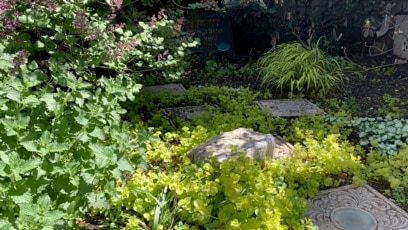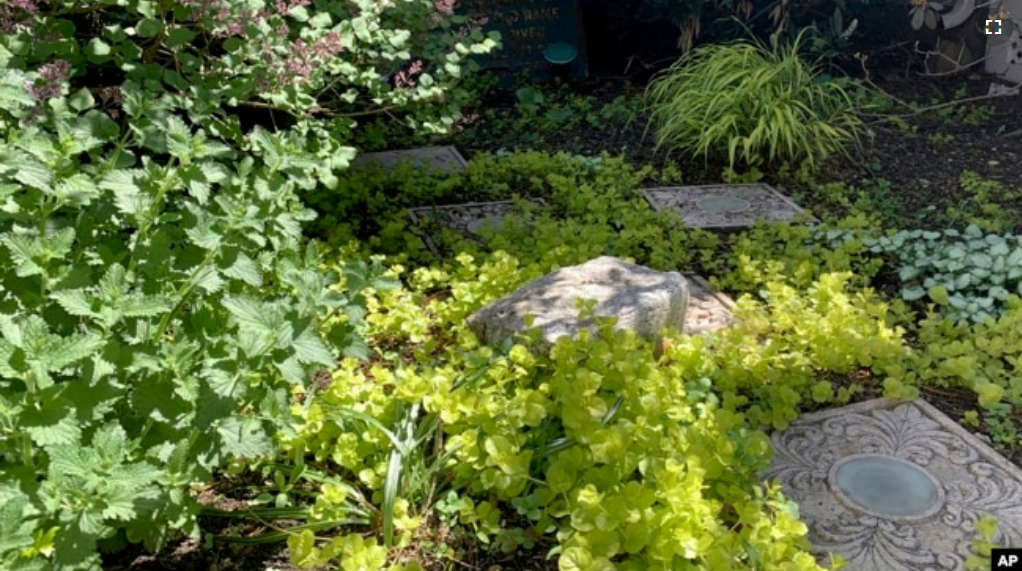From VOA Learning English, this is the Health & Lifestyle report.
Some people might think that growing plants without much sun is a difficult, if not impossible, task. With little sunlight, gardeners may think they are faced with limited plant choices and no possibility for color.
However, that is not the case, says Jessica Damiano. She is a gardening expert for the Associated Press and recently shared suggestions on growing plants in low-light conditions, or shade.
Damiano says you just need to learn how to work with shady conditions. And, she adds, finding the right plants for the right places, can make all the difference.
What type of shade do you have?
The first step is understanding the type of shade you have. This is based on the amount of time that sun shines on the area.
She describes the three main types of shade. They are:
- part shade (3-6 hours of direct sun, usually in the morning),
- full shade (less than 3 hours of direct sun) and
- deep shade (sunlight rarely, if ever, gets through trees or past structures like buildings).
When sunlight shines through overhead tree branches and leaves, it creates an area with both light and shade. The light only falls in certain small areas and is called “dappled.”
Observe the area
After you choose the planting area, observe the light it gets during an entire day. Note how many hours of direct sunlight reaches the ground.
If you are still uncertain, buy a sunlight meter. (Damiano says this device can cost as little as $20.) Place the light meter in the planting area for a full day and then read the results.
Buy the right plants
When you know your shade conditions, find plants that suit them.
This information is available where plants and seeds are sold. You can also research that information online, in books or magazines. Experts at gardening stores are other sources of information.
And don’t forget your local gardeners. When walking around a community garden or your neighborhood, take note of plants growing in shady areas. Talk to the gardeners. Learn about their successes and failures.
Shade gardens need different care
Damiano says there are things to know about caring for a shade garden.
For example, shady gardens usually take longer to warm up in spring. They also stay cooler on hot summer days. As a result, they will likely require more fertilizer, or plant food.
Also, they usually need less water. This is because the dirt stays wetter longer after a rainfall or watering than it does in full sun.
However, if the shade is caused by large trees directly overhead, some types of plants may need to be watered more often. So, she suggests that gardeners pay close attention to that.
She suggests adding a lot of compost to the soil at planting time. This will increase the amount of water the soil can hold. Compost will also add high-quality nutrients. And if the area has hard clay, compost will improve its drainage. (Clay is a type of hard earth that drains water poorly.)
Damiano also says to add material, or mulch, to the surface of the plant bed. This helps keep the soil wet and healthy.
Deep shade is the most challenging for gardeners. If you garden in a three- or four-season climate where deciduous trees block the summer sun, take advantage of springtime conditions by planting bulbs. They will grow into a colorful spring show before the trees become too leafy.
Ways to increase light
The gardening expert adds that painting nearby structures white reflects sunlight. Glass and mirrored objects can also reflect light around the garden.
If possible, carefully cut some tree branches. This is “to prune,” and it lets more sunlight reach the ground.
What to plant?
Damiano says to research the low-light plants suitable for your area. She also says to not give up on growing plants you can eat. Vegetables like tomatoes and peppers need a lot of sun. But leafy greens actually grow better in part shade. Asian greens, arugula, cilantro, spinach, and kale all grow well in dappled to part shade.
As for pests, Damiano says that some, like slugs and snails, like shade gardens. But most other pests are less of a problem in low-light conditions.
She also suggests another good thing about shady gardens – you will sweat less while gardening!
And that’s the Health & Lifestyle report. I’m Anna Matteo. And I’m Jill Robbins.
Jessica Damiano wrote for The Associated Press. Anna Matteo adapted it for VOA Learning English.
______________________________________________________
Quiz – Growing Plants with Little Sun

Start the Quiz to find out
_______________________________________________________________________
Words in This Story
gardener – n. a person who works in a garden especially for pay
meter – n. an instrument for measuring and sometimes recording the time or amount of something
compost – n. a mixture that consists largely of decayed organic matter and is used for fertilizing and conditioning land
clay – n. an earthy material that is sticky and easily molded when wet and hard when baked
drainage – n. the act or process of removing a liquid
deciduous – adj. biology : falling off or shed seasonally or at a certain stage of development in the life cycle
bulb – n. a dormant stage of a plant that is formed underground and consists of a very short stem with one or more flower buds surrounded by special thick leaves
reflect – v. to bend or throw back (waves of light, sound, or heat)
sweat – v. to give off salty moisture through the pores of the skin
